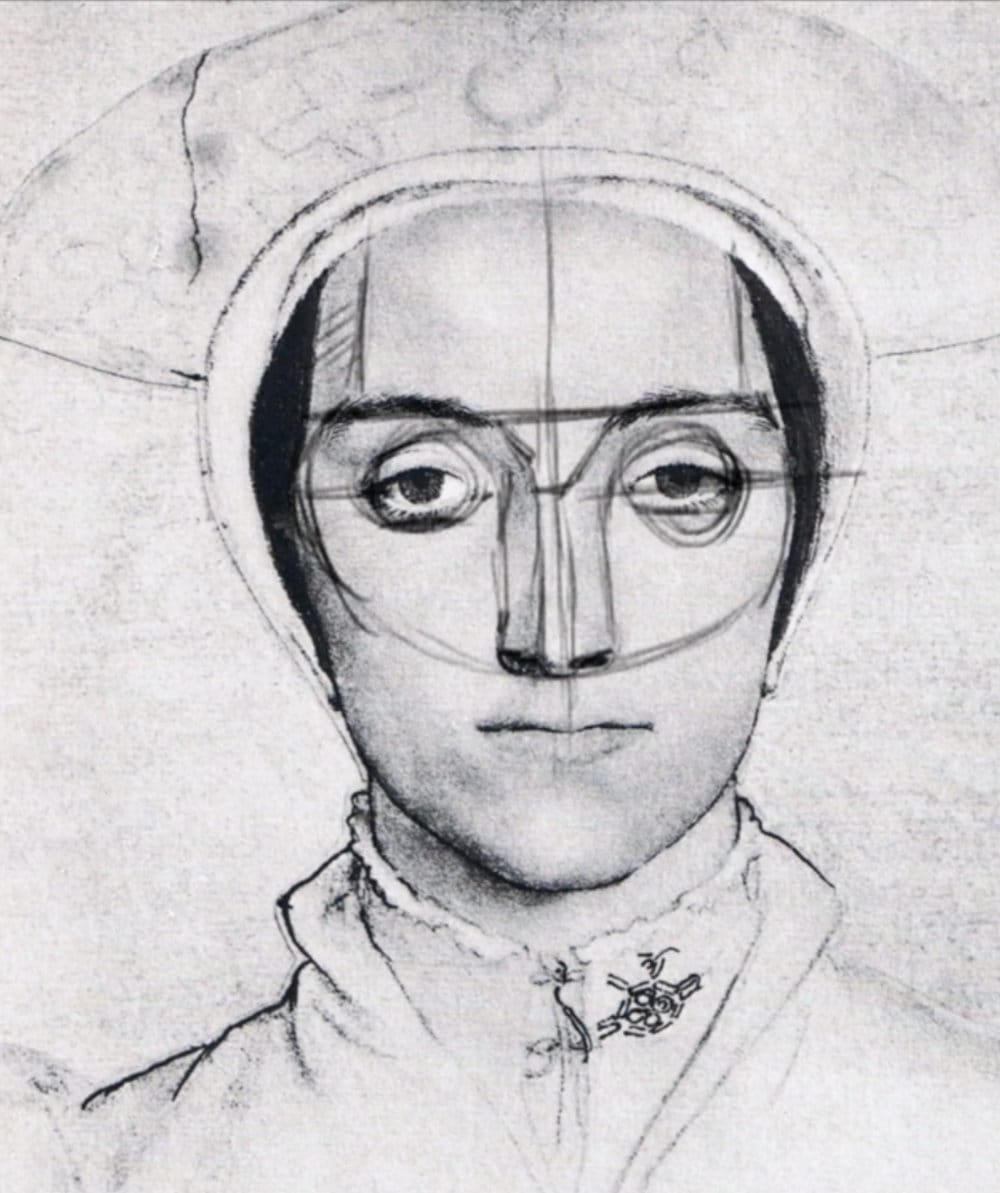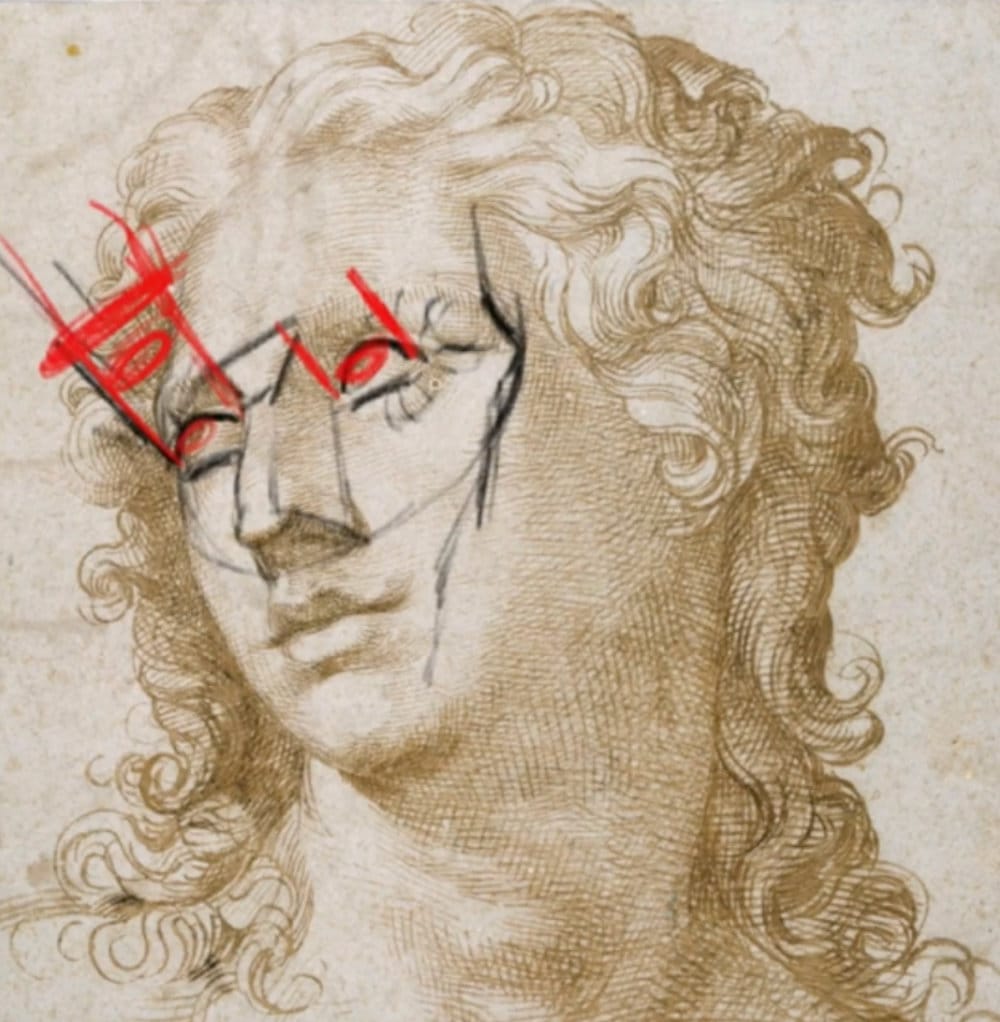Master’s Eye Analysis – Drawing Eyes with Structure
Study Holbein and Bronzino to learn how to draw eyes with believable depth. Understand structure, perspective, and realistic eye alignment.

In this lesson, I’m analyzing drawings from Holbein and Bronzino to study how master artists used structure to make their eyes feel solid and alive. We’ll build on what we learned in Part 1—tracking the brow ridge, eye socket planes, and how the eyes follow the perspective of the head.
This lesson is part of the Head Drawing Course.
The Holbein Study – Subtle Structure and Alignment
I’ve used this Holbein study before in earlier head drawing lessons, but now we can see it through the lens of eye structure.
The eyebrows act as natural guides—notice how they arch and then change direction as the head turns. That subtle shift shows where the front plane of the face transitions into the side plane.
Tracking those changes gives us the visual “step” that defines the forehead and eye socket area. If you sketch a quick construction line through the center of the eyes and nose, you’ll see how all the facial features lock together naturally.

Form and the Protective Donut
Holbein’s forms give a perfect sense of that protective donut around the eye socket—a ring that wraps around the eyeball and anchors the lids.
Even in a straightforward pose, that subtle curvature creates depth. You can feel how the brow pushes out while the eye steps back slightly into the skull. When drawing, I like to visualize this donut shape wrapping around the ball of the eye—front, side, and bottom—all working together as one continuous form.

Lost and Found Edges
One of the key takeaways from Holbein’s study is his use of lost and found edges. The eyelids don’t form a perfect almond shape or connect with dark outlines.
Instead, the edges fade and reappear, mimicking how light falls across curved forms.
When you stop outlining everything and start connecting values and edges instead, your eyes start to feel far more realistic and painterly.
The Bronzino Study – Perspective and Planes
Now let’s look at Bronzino’s study—a much more dynamic angle.
Here, the head tilts slightly, and we can clearly see the eye sockets wrapping over the spherical shape of the skull. The brow ridge protrudes forward, while the cheek plane moves away from us, showing how the face flows in perspective.
If you draw a centerline through the face, you’ll notice how both eyes stay perpendicular to that invisible “axle” line. This keeps the gaze consistent, even as the head tilts.
Eyeball Orientation and Axis
When the figure looks upward, the pupils and irises rotate with the head. The axis of the eyes always stays perpendicular to the direction of the gaze.
A common mistake is to draw eyes facing straight out even when the head turns—but the masters never did that. They kept the eyeballs oriented within their sockets, maintaining that consistent elliptical tilt.
Depth and Foreshortening
Bronzino’s sketch shows strong evidence of foreshortening: one eye recedes slightly while the other becomes more prominent. You can track this by comparing how the brow and cheek overlap differently on each side.
This creates that sense of the head occupying real space—not just sitting on a flat plane.
Practice Tips
- Start every eye study with the centerline and brow ridge.
- Visualize the donut shape wrapping around each eye.
- Keep irises aligned along the same “axle” when heads tilt.
- Soften the eyelid edges to suggest light and form.
Course Navigation
Previous Lesson: Master’s Analysis Part 1
Next Lesson: Master’s Analysis Part 3
Visit the Head Drawing Hub
Continue Learning
If you enjoyed this hand drawing course, explore even more lessons on our Free Drawing Tutorials & Courses Hub — including the complete How to Draw – Beginner’s Course.
Want new tutorials delivered to your inbox? Subscribe here and get free lessons, tips, and inspiration sent directly to you.




